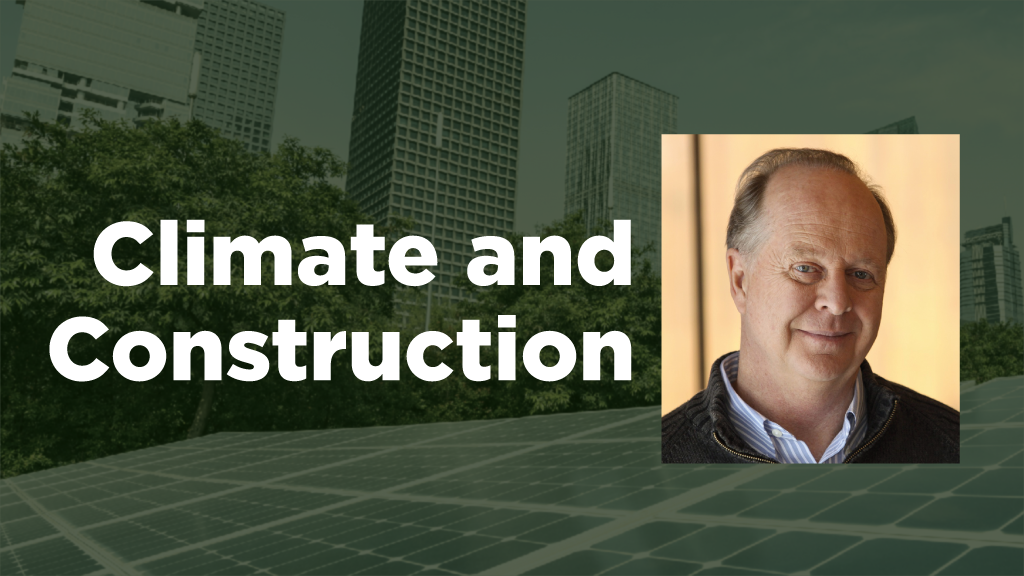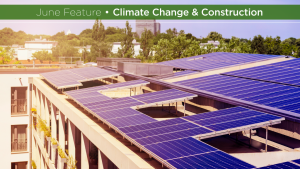World attention has been buffeted by economic disruptions caused by Russia’s invasion of Ukraine, high energy prices, increased interest rates and levels of inflation not seen in years. However, record high temperatures and fires across Europe, the southern United States and Western Canada are reminders that the long-term, critical issue of high global temperatures persists.
Environmental, Social and Governance statements, known as ESGs, have been elevated in importance as a form of response from the corporate community. In actual fact, ESGs are an expansion of what has long been known as socially responsible investing. In today’s world, companies are being compelled to address their awareness and response to global environmental issues through publicly-stated ESG policies.
The construction industry is deeply embedded in the matter of ESGs. Owners proposing new construction of any sort, commercial or housing, are increasingly required to address the design of the building, its method of construction and daily operations after occupancy, all with the objective of reducing embodied carbons and carbon emissions. In turn, investors considering funding these projects are looking for substantive ESG statements as part of their risk analyses, alongside credit and interest rate risk.
As a result, major parties to a project may be asked to provide their own substantive ESG policies and explain the methods to be used for verification. Those requirements could, in some cases, travel further down the construction pyramid.

However, ESGs are facing scrutiny, notably from the Canadian Securities Administrators (CSA). As Melanie Cole and Christian Nianiaris of Aird & Berlis write, “The CSA notes a number of concerns surrounding current climate-related disclosure, including issuers’ potentially incomplete and inconsistent disclosure, the fact that issuers may be selectively reporting and that sustainability reporting may not be integrated into companies’ periodic reporting structures.”
What the CSA appears to be saying is: “Beware of greenwashing.”
The result has been what Cole and Nianiaris note as “a growing number of lawsuits from investors and environmental organizations regarding climate risks. “
Such increased levels of ESG scrutiny are needed.
“Environmental, social and governance investing and reporting is facing existential questions associated with a lack of standardization, regulation and common purpose,” says a new EY report released this month.
“Right now, ESG is facing a make-or-break moment and requires a whole system approach to addressing these issues,” said Steve Varley, EY global vice chair – sustainability. “Sustainability is everybody’s business and more work must be done to encourage open collaboration and trust-building among those who shape the industry.”
In physical terms, ESGs can have great results. Brookfield Properties’ flagship tower in New York City is an example.
One Manhattan West, the company’s 67-storey, 2.1-million-square-foot flagship office tower, will be powered 100 per cent by renewable energy through a five-year agreement with sister company, Brookfield Renewable. This is part of Brookfield’s commitment to reduce two-thirds of Scope 1 and 2 emissions, ie: directly and indirectly controlled emission sources, across $147 billion of its assets under management by 2030.
There’s more to ESG policies than just words, however. As one industry insider told the Daily Commercial News, simply saying that one is going to do something is meaningless if operational business models and occupancy behaviour don’t actually change.
“There’s just so much jargon. You can’t possibly do the things you did yesterday and expect a different result.”
Some within the commercial real estate industry in the United States are unhappy with the current SEC compliance models for ESGs and are reportedly fighting back. They say mandated compliance for reporting carbon emissions generated by certain building materials or tenants, an essential aspect of the SEC rules, is too difficult
Katie Kummer, EY global deputy vice chair – public policy, takes a more optimistic view on ESGs.
“The sustainability ecosystem is just more than 20 years old, and so still in its maturing stage compared to the financial reporting ecosystem. It is essential that we work together to build a system that is globally consistent, trusted, responsive and where everyone has a voice.”
John Bleasby is a Coldwater, Ont.-based freelance writer. Send comments and Climate and Construction column ideas to editor@dailycommercialnews.com.








Recent Comments